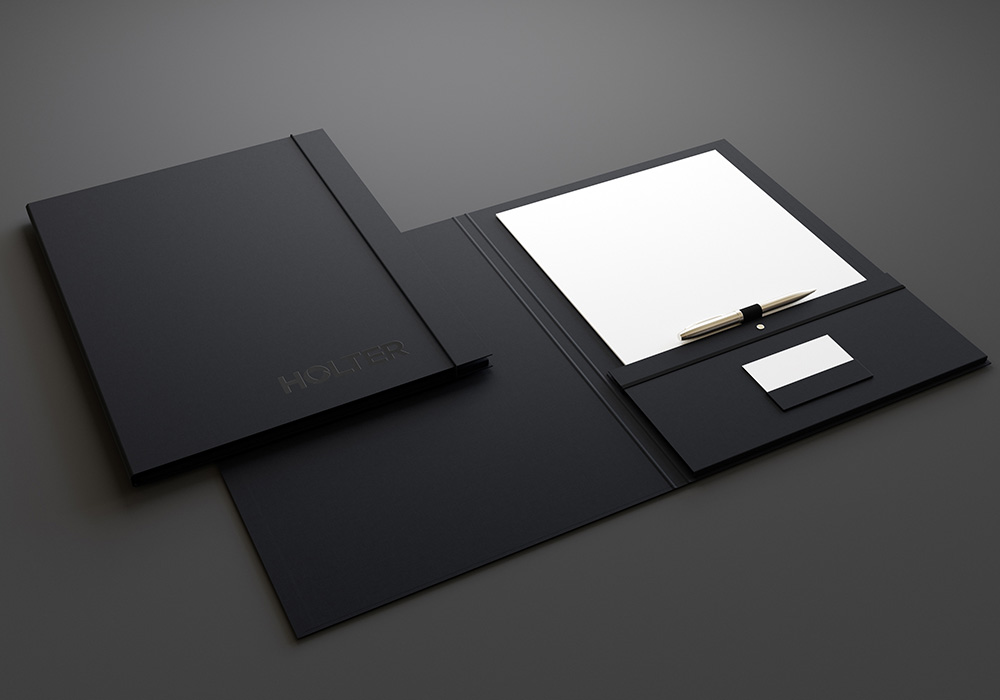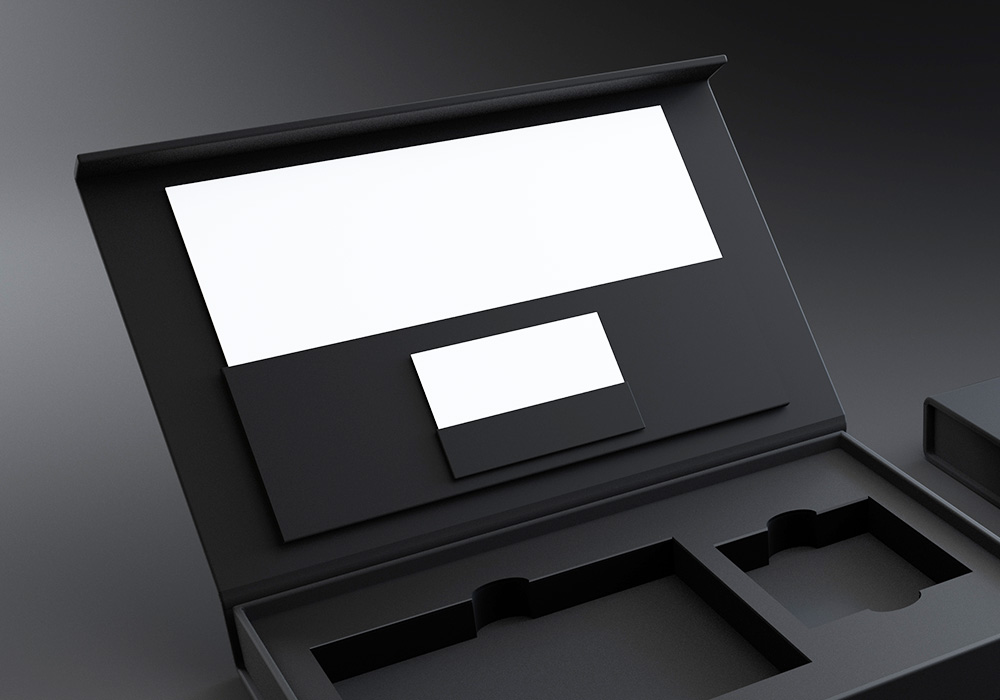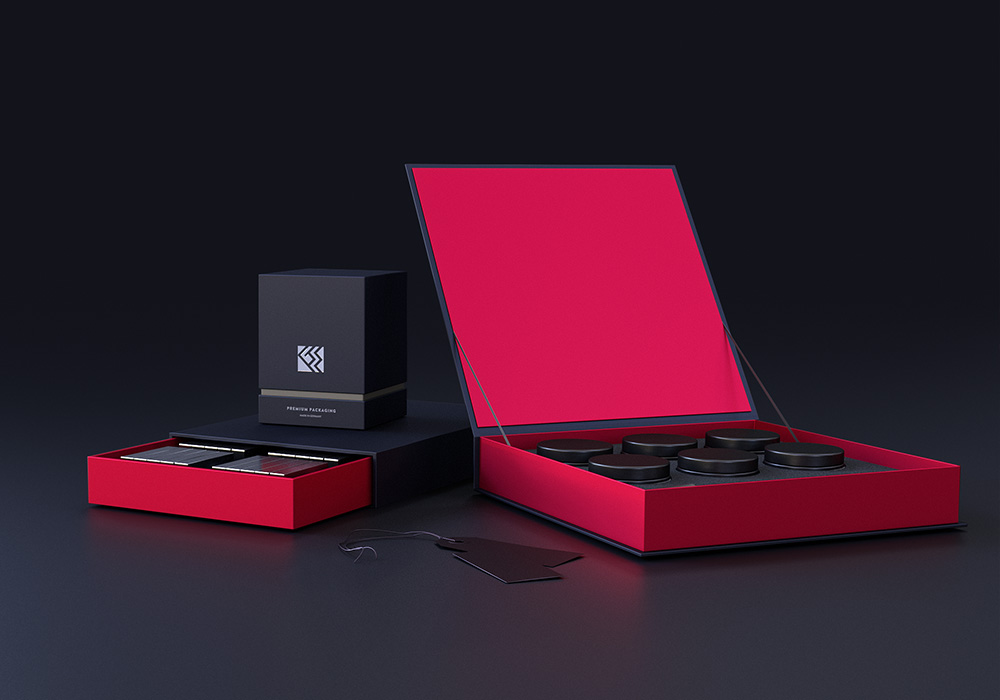A variety of products can be accommodated without using an inlay made from cardboard or foam. Others require a customized inlay, for example for protection, shipping, or presentation purposes. In the following we would like to provide you some information on the design of functional and practical solutions.
Packaging with foam inlay: irreplaceable in many areas

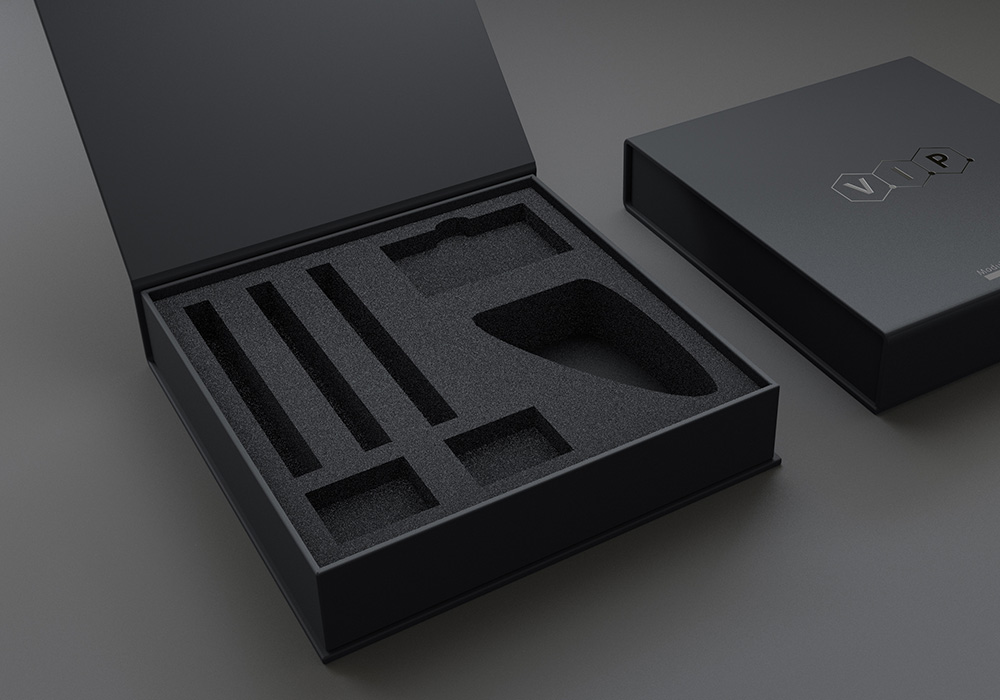
We will not go into detail about the various available types of foam qualities. Rather, we want to talk about sensible space allocation and use, taking into account to keep the packaging as small as possible in its dimensions. First of all, a few universal and general tips:
Product placement
At best, the main product should be directly visible when opening the box. Unattractive, secondary content such as plugs, spares or sachets can be hidden under the main product. Here we usually recommend different layers of foam.
Space allocation
Also make sure the inlay is divided sensibly. Passepartouts and sufficient distance between the products create clarity and do not overwhelm the eye.
Ecology and sustainability
Not only for cost reasons, inlays should be used in the most material-saving way possible. In addition, foam should only be used if absolutely necessary, otherwise an inlay made from cardboard should be preferred. It is not secret that foam is artificially produced and not ecologically degradable.
Inlay design: many paths lead to the goal

Cardboard inlay
Example #1 shows a cardboard inlay with a conventional product panel and two accessory elements. A writing instrument is accommodated in the integrated rubber loop, and a business card in the card compartment. This inlay variant offers the advantage that the difference in height between the main product and the ancillary products is compensated. This means that the inlay does not have to be made right up to the edge of the box, and all the contents can still be removed easily.
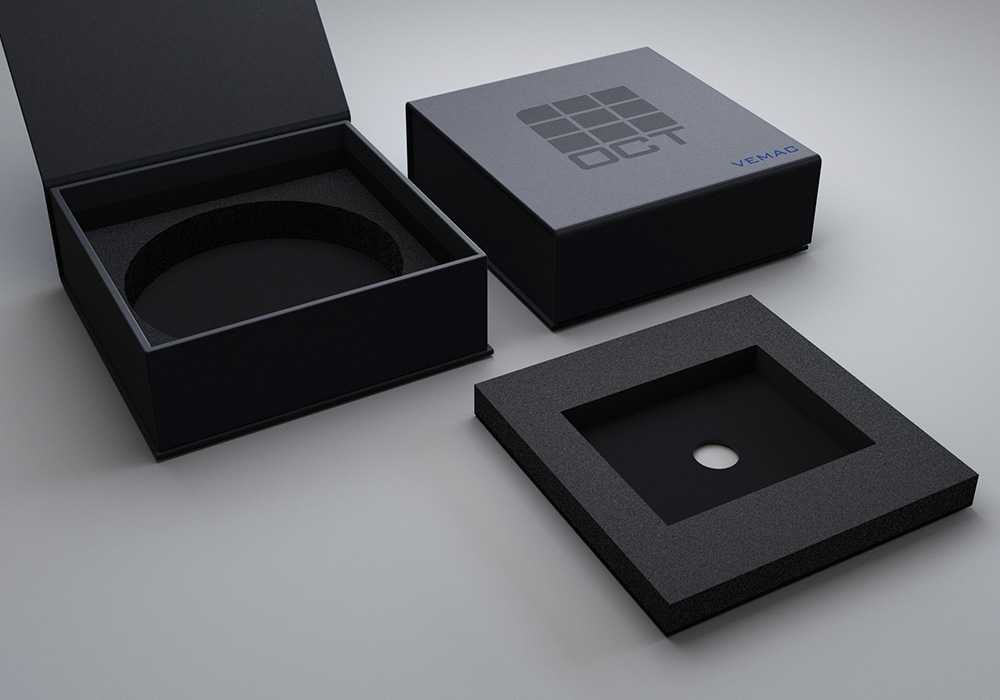
Combination of foam and cardboard
Example #2 illustrates a combination of foam and cardboard. The main product is embedded in a foam inlay, while the foam inlay is placed on a cardboard panel with a recessed grip. The top layer can be easily removed, while the secondary contents are located underneath in a precisely fitting foam inlay.
Inlay design made easy: Top service from Guddenberg
Certainly, the variants shown above represent only a fraction of possible solutions. The design of a functional inlay is ultimately always product-dependent and should be well thought out accordingly. cardstock will also be happy to develop the appropriate inlay concept for your products.
How does this work? It's very easy:
You simply send us your products and we get to work. We measure your content and put our concept proposal on paper using high-quality 3D renderings. We look forward to seeing your projects!

